DIPLOMA IN ELECTRICAL & ELECTRONIC ENGINEERING (S99, DEEE)
PROJECT GALLERY
See below for the creations and innovations of some Final Year Projects done by students from the Diploma in Electrical & Electronic Engineering (DEEE). These projects are grouped based on the following industry sectors:
Aerospace Engineering
|
Autonomous Flying Machines
This project has seen the creation of various types of autonomous quadcopters that can be controlled by gestures using Kinect sensor, that can perform position-hold with optical flow sensor, can perform altitude hold with ultrasonic sensor,
perform auto-takeoff, auto-landing, mapping and that can navigate to avoid obstacles with laser sensors and make precise landings with StarGazer sensors and be able to fly and follow a target.
|
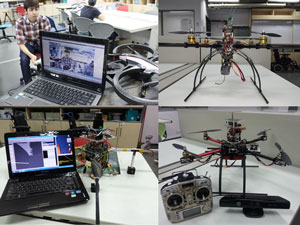 |
Automation & Instrumentation
|
Robots At Work
The objective of this project is to enable the use of innovative mobile robots equipped with advanced manipulators for current and future industrial applications. The robots will then cooperate with human workers for complex tasks ranging
from manufacturing, automation, and parts handling up to general logistics. This project focuses on navigation and manipulation. Navigation allows the robot to move around in its environment in a goal-oriented, autonomous, robust,
and safe way. Manipulation allows the robot to demonstrate its capabilities in handling an object, for example picking, grasping, turning, sorting or placing the object.
|
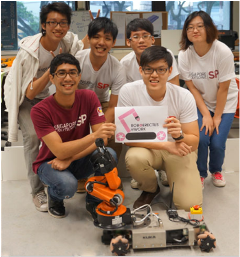 |
|
Social Robot
The project aims to develop a social robot according to standards of RoboCup @Home robots. This robot will be able to perform tasks such as transferring documents from one office to another. It will also be able to detect faces and call
individuals by their names, if known or ask the unknown person for his name which will be remembered for future interactions. During the Engineering Show the robot will greet known visitors by their names and will also distribute goodies
(i.e. candies) to the visitors.
|
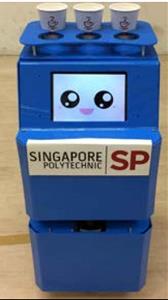 |
|
Iconic Android Robot
This project aims to develop an android robot. Android robots are considered one of the most challenging robotic systems because the design should follow the human body. The control and behavior of the robot should also be as human as
possible. The most important reason for building androids is to help humans enjoy life by relieving us of many mundane tasks which are performed daily. The android robot is a platform from which students learn about robotics and is
a great research tool for them to learn about human-machine interaction.
|
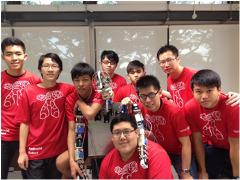 |
|
Elderly Rehabilitative Interactive Companion
Pet therapy has proven to be a very effective technique in helping this condition. However, in Singapore, animals are not allowed in nursing homes as they might bring unwanted diseases and pests that may cause harm to the elderly. The
Elderly Rehabilitative Interactive Companion (ERIC) is developed to replace real pets. ERIC mimics the functions of a puppy and serves as a motivation for the elderly to exercise.
|
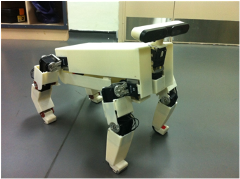 |
Information & Communication Technology
|
IoT for Smarter Living
This combined project shows how the Internet of Things (IoT) technologies can be used to enable smarter living in the home. This is done by allowing everyday home devices to be connected to smart phones, the Internet and user's social
media accounts like Facebook and Twitter. The project also shows how intuitive natural user interfaces can be used to interact and control these devices. This project demonstrates an exciting future where a smart home provides users
with the unique experiences of controlling and interacting with their home.
|
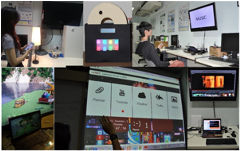 |
|
Sleepiness State Detection and Alert System
Statistics has shown that there is an increasing amount of accidents occurring due to drivers being sleepy. Based on the Support Vector Machines (SVMs) algorithm, this project develops a mobile application that can automatically determine the driver's sleepiness state and alert him/her accordingly. Accident rates could thus be reduced as drivers will do the necessary to ensure that they are good to drive.
|
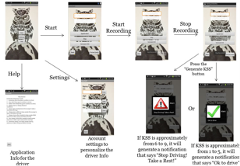 |
|
Integrated Telehealth
The project aims to develop an integrated Telehealth solution, bundling together various healthcare devices - fall detection, medicine dispenser, temp/pressure monitor, sick simulation robot. Through wireless data acquisition, mobile devices generate alerts in remote places reaching caregiver, commnuity and emergency units at the same time. To achieve the tasks, GPS location service, GPRS modem, BT wireless and Android platform are integrated with healthcare devices.
|
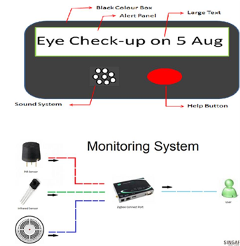 |
Power Engineering & Sustainable Energy
The Self-Sustaining Smart Garden
The Self-Sustaining Smart Garden integrates 11 Final Year Project (FYP) groups into one integrated project. The aim of the project is to create a garden which uses clean energy, one that is able to self-sustain itself and is smart. It also includes applications for Android users, web page for data, CCTV monitoring and web-based data management for updating data of the garden. Most importantly, the garden helps to educate the public about clean energy and its self-sustaining capabilities and smart features.

|
Energy Monitoring System
This project presents the design and development of an energy monitoring and profiling system with options for analysis and control to achieve better energy efficiency. The system is able to integrate single and three phase digital
energy meters with modbus or other proprietary communication protocol into a platform with LAN, WIFI or remote 3G access.
|
 |
|
Optimising Home Energy with DC Microgrid
The project develops and demonstrates an intelligent modern home energy management system with the DC microgrid concept, targeting not only to save household electricity bills through more efficient energy conversions and incorporating renewable sources, but also to create a safer, greener, healthier, more reliable and more sustainable energy environment at home.
|
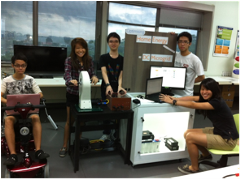 |
|
Solar Car (SunSPEC 4)
This is a cross-school, multi-disciplinary project that required students from school of Electrical & Electronic Engineering (EEE) and school of Mechanical & Aeronautical Engineering (MAE) to design and build an advanced 2-seater
solar EV, with carbon fiber and carbon composite monocoque shell, independent 4-wheel suspension, ackermann steering, regenerative in-wheel BLDC drive system, Li-ion battery pack with BMS, high-performance solar array and telemetry
for system monitoring. The completed vehicle had participated in the 2015 World Solar Challenge. This is a 3000 km race across the Australian Outback, stretching from Darwin to Adelaide, that lasted over 6 day
|
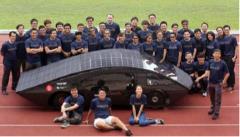 |
Semiconductor & Electronics
|
Smart Home System
This project is designed based on the KNX and Arduino technology platform to achieve smart home automation equipped with energy management. The system would also redefine security control via Near Field Communication (NFC) technology and protect the home against fire hazards through a programmed automatic sprinkler system. The system would also alert users and the relevant authority through telecommunication. The project aims to bring comfort, safety and sustainable
living through technology.
|
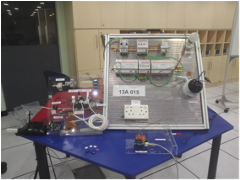 |
|
Brain Computer Interface-based System for Handicap
The aim of this project is to design and develop a brain computer interface (BCI) based system to assist the handicap in their daily needs and entertainment. The system is being incorporated with an emotive headset. By further processing
the userbs brain wave, the system is able to reflect the userbs needs or entertain him/her with various activities.
|
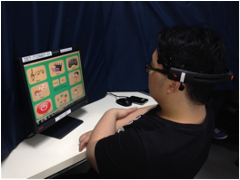 |
|
Smart Gait Power Walker
The Power Walker is a user-friendly walker for the elderly to aid them with their mobility. The structure is compact, collapsible and lightweight, making it easy for transportation. It also comes with a fall prevention feature, a bum rest
and an optional leg-lifting mechanism, offering the elderly additional support.
|
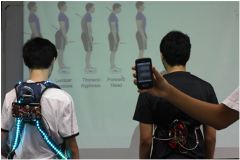 |
|
Elderly Smart-care System
The Elderly Smart-care System has many features like the Intelligence bed and a central monitoring unit. Our group focused on a dialog that differentiates the needs of a patient by communication through speech. We also feature a snoring
recording system that helps to track the patientbs snoring. This recording can be analysed by medical personnel for any signs of abnormal activity.
|
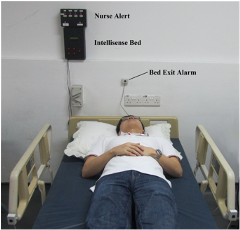 |
|
Flexible Electronics
In these projects, students explore the development of humidity and alcohol breathalyser sensors by printing functional inks on flexible substrates. The humidity sensor is useful for humidity measurement in skincare applications while
the alcohol breathalyser sensor is used to test alcohol in a driver's breath.
|
 |